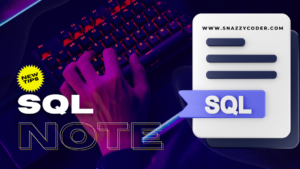SQL Introduction
Database:
A database is an organized collection of data, designed for easy retrieval, storage, and management. It serves as a central repository for information.
DBMS (Database Management System):
To manage databases effectively, Database Management Systems (DBMS) are used. A DBMS is software that interacts with the database, facilitating tasks such as data storage, retrieval, and manipulation.
Types of DBMS:
There are different types of DBMS, including:
1. Relational DBMS (RDBMS):
– In RDBMS, data is stored in tables.
– Tables consist of rows and columns, representing records and attributes.
– Examples include MySQL, Oracle.
Example:
| RollNo | Name | Class |
————————————
| 1 | Jai | 5th |
| 2 | Amar | 7th |
| 3 | Anuj | 5th |
| 4 | Ram | 8th |
————————————
2. Non-Relational DBMS:
– Also known as NoSQL databases.
– Handle unstructured or semi-structured data.
– Examples include MongoDB, Cassandra.
SQL (Structured Query Language):
SQL is a domain-specific language used for managing and manipulating relational databases. It provides a standardized way to interact with databases, allowing users to perform various operations such as:
– SELECT: Retrieve data from a database.
– INSERT: Add new records to a database.
– UPDATE: Modify existing records in a database.
– DELETE: Remove records from a database.
– CREATE: Create new database objects (tables, indexes, etc.).
– ALTER: Modify the structure of a database.
– DROP: Delete database objects.
SQL is essential for database administrators, developers, and anyone involved in working with databases. It enables efficient and secure handling of data, ensuring data integrity and consistency.
Here is the SQL Note PDF by @programmer_girl__

